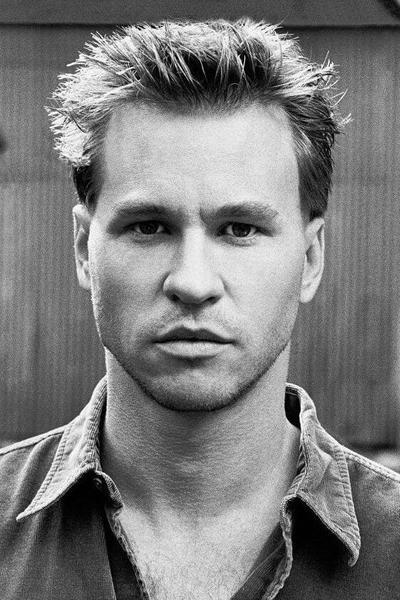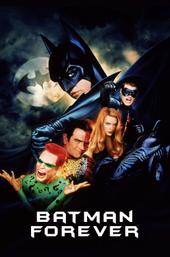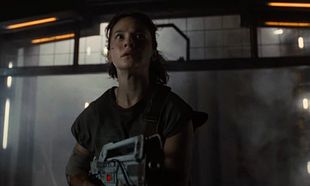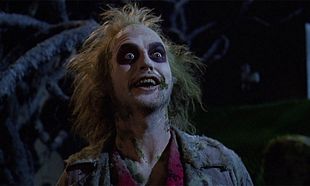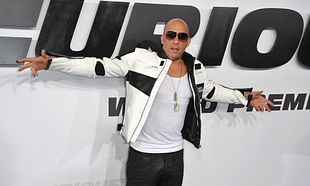Troubled productions don't necessarily produce troubled works.
For every three Apocalypse Now-type shoot, there's a Jaws to balance it all out. Of course, some have been more rough than others and some have passed on into legend. Here's a rundown of some of the worst, most bedraggled, most intense productions of all time.
6. 'The Island Of Dr. Moreau'
There's a reason you're not overly familiar with this film. In a nutshell, it was a giant mess from start to finish and cruel, twisted fate had a big part to play. The film went through two directors, various rewrites, a tumultuous relationship between its star (Val Kilmer) and the replacement director (John Frankenheimer) and Marlon Brando trying to cope with his daughter's suicide on set. Yeah, really. The original director, Richard Stanley, had spent years developing the film and was even a descendant of a real-life explorer who served as an inspiration to H.G. Wells' writing.
What happened?
The studio went behind the original director's back and tried to cut him out, offering it to Roman Polanski instead. The original director then managed to get Marlon Brando and Bruce Willis onboard and was ready to begin production. Before filming began, Bruce Willis dropped out due to his highly-public divorce with Demi Moore whilst Marlon Brando's daughter, Cheyenne, committed suicide. Brando retreated to his private island and refused to return to the set for filming. Brando and the original director had formed a bond and were fighting off studio interference. Val Kilmer was brought on to replace Bruce Willis, who immediately demanded 40% less screentime and less time on set. As well as this, Kilmer was reportedly ALSO in the middle of an acrimonious divorce from his then-wife, Joanne Whalley. Set crew and actors also attested to Kilmer being nothing short of a bully during his time, regularly berating Richard Stanley's ideas as director and undermining him at every opportunity.
The fallout
After a total of three days on set, Stanley was fired by the studio and offered his full director's fee if he left quietly and said nothing. The female lead clashed with studio executives and ordered her PA to drive her from Cairns Island to Sydney - in a limousine. That's a trip over 2,000 miles. Another director, John Frankenheimer, was brought in who held the studio over a barrel and got a three-picture deal and a huge fee off them. The production lurched on, with more hassle between Frankenheimer, Kilmer, Brando and the crushing weather in Australia. What's more, the film was a critical and commercial bomb.
5. 'Blade Runner'
Often cited as one of the most inventive and original sci-fi films ever made, 'Blade Runner' is hailed as the crux point between arthouse cinema and blockbuster. Pioneering special-effects, a director at the height of his powers, a strong cast - all that couldn't stop a truly difficult shoot for all concerned.
What happened?
As with most of these things, studio interference and a headstrong director. Ridley Scott came from a background where he worked with small English crews on commercials and was used to his orders being followed without question. The film was shot mainly at night, which became hugely expensive for crew costs and was taxing on all the actors involved. Harrison Ford, meanwhile, "tangled" with Ridley Scott on more than one occasion. Ridley Scott's clashes with the crews became even worse when, during an interview with a British tabloid about the production, said that he preferred working with British crews over US crews. The 'Blade Runner' set crew got wind of the article and turned up wearing t-shirts that directly referenced the interview. Meanwhile, the film's budget began to get bigger and bigger and the special effects became more and more complex.
The fallout
Harrison Ford was on the hook to record a voiceover track, despite the fact he was expressly against it. The film, meanwhile, was marketed completely differently to what the film really was. Early trailers and previews pitched Blade Runner as an action / adventure. The film received middling reviews, with one review calling it "Blade Crawler" whilst others felt the special effects overshadowed everything else. The film went through three different versions - the Theatrical Cut, the Director's Cut and, 25 years after its release, the Final Cut. Still, it's since been reevaluated for what it is - one of the best sci-fi films ever made.
4. 'Ishtar'
Ishtar didn't so much as destroy the promising career of director Elaine May as it nuked the whole thing from orbit - she wouldn't direct another movie again until 29 years later. Despite the initial help from Warren Beatty and Dustin Hoffman, the arduous filming in the North African desert began to take its toll whilst the worsening political situation in Morocco made production even worse.
What happened?
Elaine May had worked up a lot of favours in Hollywood, having helped with rewrites of 'Reds', 'Tootsie' and many more. With that in mind, Warren Beatty had gone to bat for May and urged the studio to hire her - despite the fact she was relatively untested as a film director. On-set battles raged between Beatty and May, with matters coming to a head when May effectively told Beatty to shoot the film the way he wanted. The result was that the number of takes on the film doubled and so to did the production's costs. Towards the end of the film's production, a new studio exec was brought on who had a score to settle with Beatty and Hoffman and leaked stories about the film's troubled production to the press.

The fallout
As mentioned, Elaine May didn't work again for three decades as a director. She and Warren Beatty, who were close friends up until the film, didn't speak for two years. To this day, May reportedly is incredibly bitter about the entire experience. The film, naturally, was a complete disaster - both critically and commercially and is regularly cited as one of the worst films ever made.
3. 'Blade: Trinity'
The third and final film in the Blade Trilogy currently sits at 25% on Rotten Tomatoes. Yet, despite this, the film was a financial success for New Line. Of a budget of $65,000,000, it managed to earn a total of $128,900,000. However, the on-set tension between Wesley Snipes and David S. Goyer was nothing short of legendary.
What happened?
We'll let Patton Oswalt, who starred in the movie explain it all in a way that only he can. "He (Wesley Snipes) wouldn’t come out of his trailer, and he would smoke weed all day. Which is fine with me, because I had all these DVDs that I wanted to catch up on. We were in Vancouver, and it was always raining. I kept the door to my trailer open to smell the evening rain while I was watching a movie. Then I remember one day on the set—they let everyone pick their own clothes—there was one black actor who was also kind of a club kid. And he wore this shirt with the word “Garbage” on it in big stylish letters. It was his shirt. And Wesley came down to the set, which he only did for close-ups. Everything else was done by his stand-in. I only did one scene with him. But he comes on and goes, “There’s only one other black guy in the movie, and you make him wear a shirt that says ‘Garbage?’ You racist motherfucker!” And he tried to strangle the director, David Goyer."
"So later that night, Ron Perlman was in the city. Everyone who makes movies in Vancouver stays in the same hotel. It’s like an episode of The Love Boat. Every time the elevator stops, you’ve got a different celebrity getting on. Like, [announcer voice] “Hey, now we’ve got Danny Glover!” So we went out that night to some strip club, and we were all drinking. And there were a bunch of bikers there, so David says to them, “I’ll pay for all your drinks if you show up to set tomorrow and pretend to be my security.” Wesley freaked out and went back to his trailer. And the next day, Wesley sat down with David and was like, “I think you need to quit. You’re detrimental to this movie.” And David was like, “Why don’t you quit? We’ve got all your close-ups, and we could shoot the rest with your stand-in.” And that freaked Wesley out so much that, for the rest of the production, he would only communicate with the director through Post-it notes. And he would sign each Post-it note “From Blade.”"
The fallout
Surprisingly enough, it was quite small-scale with Wesley Snipes coming off the worst. Snipes sued the studio for $5 million and argued that one of the film's crew members wore a racist t-shirt whilst he was being pushed out of the production. David S. Goyer, meanwhile, went on to work on Christopher Nolan's Dark Knight trilogy and Zack Snyder's 'Man of Steel' as well as 'Batman V Superman: Dawn of Justice'. The co-stars, Ryan Reynolds and Jessica Biel, both went to even more success - Wesley Snipes did three years in jail for failing to file income tax returns.
2. 'Alien 3'
Before a single frame of film was shot for 'Alien 3', a whopping $7 million had been spent on pre-production, artwork, conceptual imagery and a number of directors and screenwriters. To say that 'Alien 3' was doomed before it even hatched was an understatement.
What happened?
David Fincher was one of several directors approached to take on the film. His first big-budget film, Fincher had honed his craft working on music videos and commercials - much like Ridley Scott had done back in 1979. However, with no script locked in and a deadline to meet, Fincher launched himself into the production. Pretty soon, studio pressure became instantly apparent and constant phonecalls between the studio and Fincher were the norm. Charles Dance, who played Clemens, spoke highly of Fincher's abilities. "Fincher had the studio on his back the whole time phoning him at all hours of the day and night – not taking into account the time change... I remember walking on this huge set at Pinewood Studios and Fincher comes up and fires off his shot list for the day. Here’s this guy young enough to be my son who knew all the crew’s jobs, all the shots he wanted, and where he was going to make the cuts in the film, and I thought, my God, this guy is going to go far."
The fallout
David Fincher rarely speaks of 'Alien 3' in interviews and has been pretty open about how much he hates the film. In a BFI interview, Fincher said that 'Alien 3' was a "baptism by fire."
"I was very naive. For a number of years, I'd been around the kind of people who financed movies and the kind of people who are there to make the deals for movies. But I'd always had this naive idea that everybody wants to make movies as good as they can be, which is stupid." Of all four of the 'Alien' films, Fincher was the only director who refused to take part in the restoration of them for a DVD boxset. The series continued on, with 'Alien: Resurrection' and the sort-of spinoff sequel 'Prometheus' and the very much a sequel 'Alien: Covenant'. Pretty much everyone walked away unscathed, which is rare for such a high-profile failure.
1. 'Apocalypse Now'
Easily the most well-known of troubled productions. Forget 'The Revenant'. Forget 'Justice League'. Forget any of these. 'Apocalypse Now' had heart-attacks, Communist insurgencies and a director slowly but surely going mad in the jungle.
What happened?
What didn't happen? To properly understand just how batshit insane Apocalypse Now was, seek out the excellent documentary 'Hearts Of Darkness' that gives you a full insight into exactly what happened. The cliff notes? Martin Sheen, who was a high-functioning alcoholic throughout the production, was trying to sober up. Pretty soon, he had a massive heart-attack. Marlon Brando would only work a total of 30 days or so on location for a then-gigantic fee of $3.5 million. When Brando did turn up on set, he was overweight and hadn't learned any of his lines. In fact, he didn't even really understand what the film was about. Francis Ford Coppola then had to cut around Marlon Brando's ballooning shape and rewrite the ending to suit. Costs spiralled out of control as Coppola became more and more pressured by the film's constant problems and the fact that it was his own money on the line.
The fallout
For all the problems, the madness and the infamy that surrounded 'Apocalypse Now' the end most definitely justified the means. 'Apocalypse Now' is the definitive Vietnam War movie, charting the brutality and callousness of US military involvement in the region, the lingering madness of the jungle and the oppressive reality that war is a part of humanity as much as anything else. Bleak, dark and utterly, utterly brilliant, 'Apocalypse Now' is one of those films that's required viewing and knowing the sheer scale of the problems involved in making it has fuelled its legacy.


